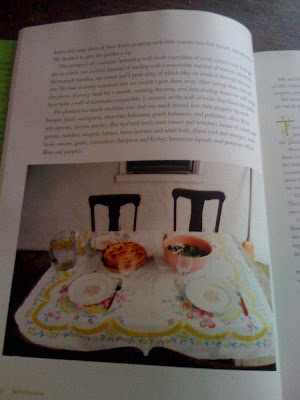bean blossom heirlooms
a little glimpse into our postmodern, old-time lifestyle!
Sunday, July 8, 2012
A Little Story About a Worm and a Wasp
This is a Tomato Hornworm and can be a real pest in the garden, particularly if you hope to enjoy any tomatoes you've planted. They can eat all the leaves clean off of a tomato plant in what seems like lightning speed. Large, fat, and the perfect shade of green, the coloring of their body allows them to munch away incognito.
Often, people go hunting for them on their plants, hoping to get to the caterpillars before they really dig in. You can spend hours and hours picking them off. As for what to do with them after that, some gardeners pull them apart at the middle and some find they make the perfect snack for their hen friends- hey, it's the circle of life!
But not everyone knows that if you, the gardener, just hold back a little bit longer, there's more in store for the Hornworm than you could have even guessed. I'll admit, it was so difficult for me to stand back and watch some of our tomato leaves disappear into thin air. But David assured me that Nature had a trick up her sleeve. About two weeks ago, I was walking among our rows of tomato plants when all of the sudden a large bit of white color caught my eye amongst the leaves.
And here is what I saw.
See, there is a wasp, known as the Parasitic Wasp, that lays its eggs inside of the unsuspecting Tomato Hornworm. As they hatch, they eat their way outside of the Hornworm's body, killing it. It's quite a disgusting little show, but the end result is a healthy, happy tomato.
Today, I was out gathering the first little cherry tomatoes and peered through the long row of plants. I couldn't see any signs of worms or recent worm damage, so it does seem to be a very good solution, so long as you have a good little ecosystem around your garden that includes helpers like the parasitic wasps.
If by chance, the wasps don't seem to be showing up to your garden and you don't have any hungry chickens on hand, one of the best controls is to use 'companion plants'. Plant things like carrots, dill, fennel, parsley, or Queen Anne's Lace nearby. These all have tiny, umbrella-like flowers, which attract the parasitic wasps. Think of it as a palate-cleanser for the tiny wasps, who like to snack on a bit of nectar between those huge caterpillar meals.
Saturday, July 7, 2012
A Recipe for Pickling Beets
With each vegetable we have pulled from the earth since early this spring, I have had that sort of giddiness that comes to the gardener when a new variety is ready for its first harvest. When it was the humble beet's turn, I had to pause in wonderment- it really was a beautiful vegetable!
This year we grew several varieties of heirloom beets, but the Bull's Blood beet was perfection. When sliced, it displayed rings in several shades of pink along with the loveliest hot pink juice color.
To make these pretty colors last into the very gray and dismal winter, I got to work.
This recipe for pickled beets is adapted from one of my new favorite cookbooks, The Farm by Ian Knauer.
Some dreamy photos from the cookbook of the farmhouse that Knauer lives in.
6 pounds beets
6 fresh dill sprigs
3 shallots or 3 heads garlic
3 tablespoons pickling spices
3 cups distilled white vinegar
3 cups water
1 cup sugar
2 tablespoons plus 1 teaspoon kosher salt
Preheat the oven to 400 F.
Wrap beets in aluminum foil and roast until they are easily pierced with a fork. Let the beets cool, then put on some gloves, (or don't if you won't mind stained hands) and rub the skins off. Slice and divide them among 6 sterilized pint canning jars along with the dill, sliced shallots or garlic, and spices.
Bring the vinegar, water, sugar, and salt to a boil, then pour the mixture over the beets. Leave about 1/4 inch of space at the top of each jar.
Cap jars and process in boiling water for 20-30 minutes. Remove the jars and let cool. You'll know they are sealed if you hear the little pinging noise, but you can also check by looking to see if the jar flats are indented in the middle. Keep in a cool, dark place.
Subscribe to:
Posts (Atom)





